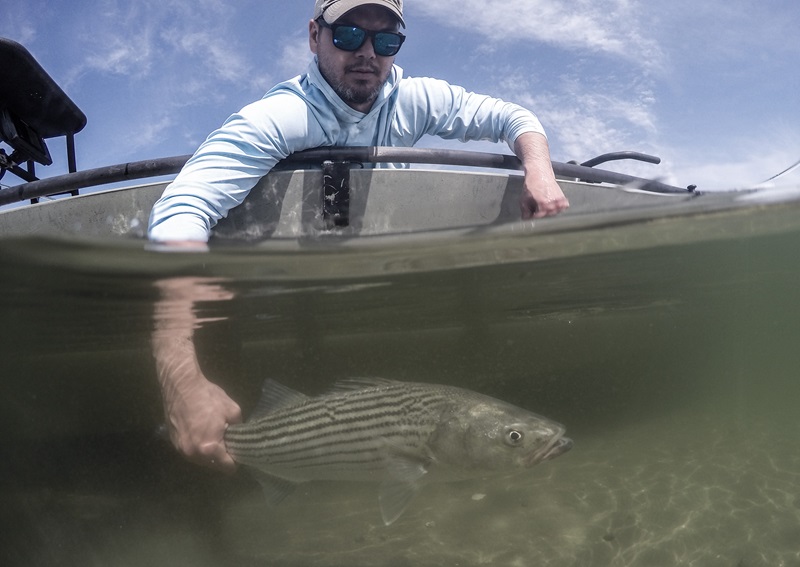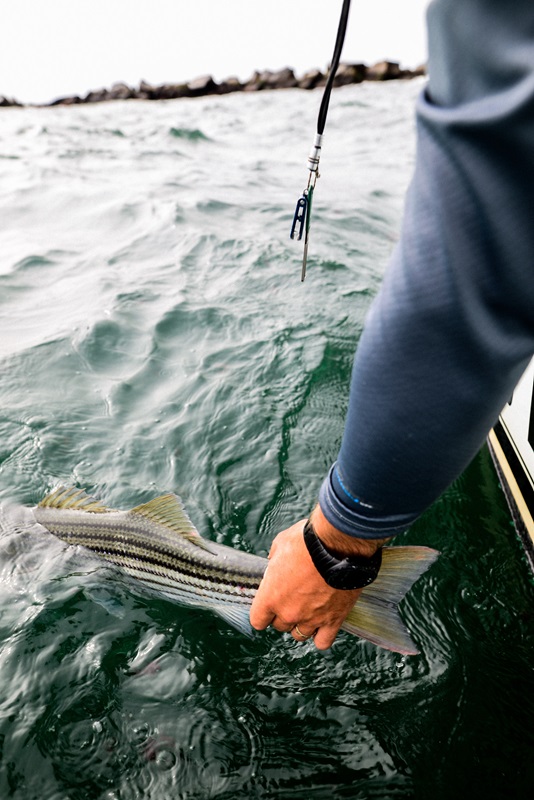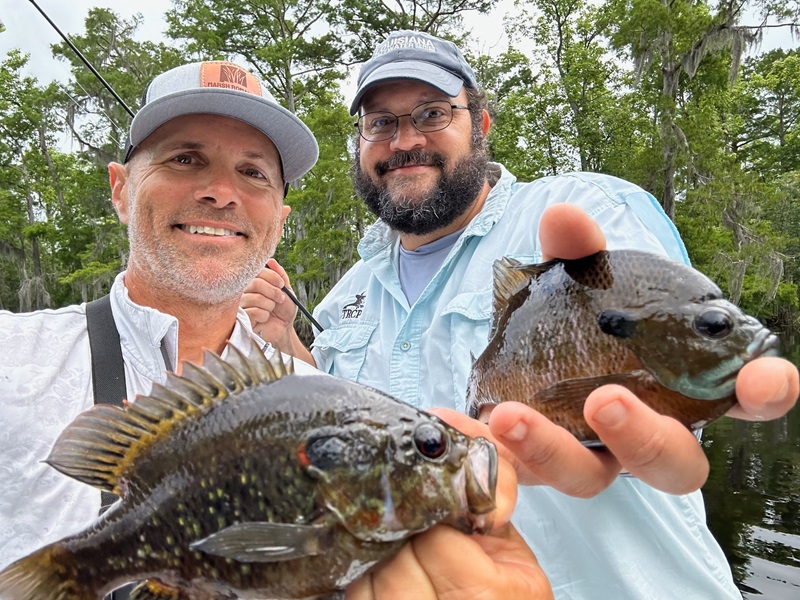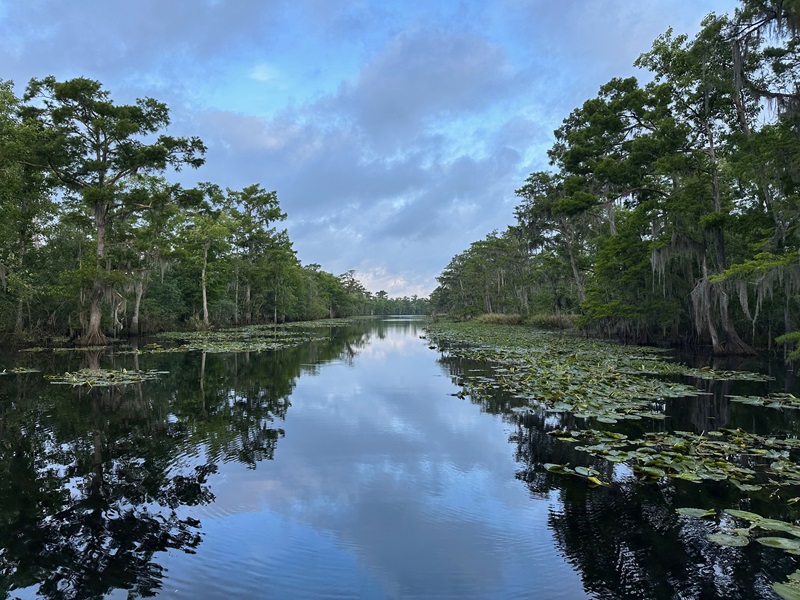Blakeslee-Farm-Wetlands-Credit-Su-Fanok-TNC
Do you have any thoughts on this post?
The ACE Reauthorization Act aims to boost funding and provide vital enhancements to conservation programs benefiting fish and wildlife.
The America’s Conservation Enhancement (ACE) Reauthorization Act of 2024 passed the Senate on Wednesday May 8, 2024, by unanimous consent. The ACE Reauthorization Act was sponsored by Senators Tom Carper (D-Del.) and Shelly Moore Capito (R-W.Va.) and would reauthorize multiple programs that benefit hunting and angling including, the National Fish Habitat Partnership, the North American Wetlands Conservation Act, the Chesapeake Bay Program, and the National Fish and Wildlife Foundation. It also helps address threats like chronic wasting disease. This reauthorization provides technical improvements, administrative streamlining, and increased authorized funds to improve these programs.
“The America’s Conservation Enhancement Reauthorization Act will benefit fish and wildlife while enhancing outdoor recreation opportunities for millions of hunters and anglers,” said Becky Humphries, CEO of the Theodore Roosevelt Conservation Partnership, “TRCP applauds the Senate’s passage of this important bipartisan legislation and looks forwards to building on the success of these crucial programs.”
The original ACE Act was passed in 2020 and sponsored by Sen. Tom Carper (D-Del.) and Sen. John Barrasso (R-Wyo.). Many of its authorizations expire next year, necessitating the passage of the ACE Reauthorization act to ensure these programs can continue to operate in good legal standing.
The ACE Act is co-sponsored by Senators Ben Cardin (D-Md.), John Boozman (R-Ark.), Alex Padilla (D-Calif.), Roger Wicker (R-Miss.), Sheldon Whitehouse (D-R.I.), Markwayne Mullin (R-Okla.), Chris Van Hollen (D-Md.), Bill Cassidy (R-La.), Ron Wyden (D-Ore.), Cindy Hyde-Smith (R-Miss.), Lindsey Graham (R-S.C.), Gary Peters (D-Mich.), Angus King (I-ME) and John Barrasso (R-Wyo.).
The legislation is endorsed by the Theodore Roosevelt Conservation Partnership, Ducks Unlimited, the Congressional Sportsmen’s Foundation, the National Wildlife Federation, American Sportfishing Association, the Association of Fish & Wildlife Agencies, Backcountry Hunters and Anglers and the National Audubon Society.
The TRCP looks forward to working with the House of Representatives to ensure this essential legislation for hunters and anglers becomes law.
TRCP works to maintain and strengthen the future of hunting and fishing by uniting and amplifying our partners’ voices in conserving and restoring wildlife populations and their habitat as challenges continue to evolve.
Learn more about TRCP’s commitment to healthy habitat and clean water here.
Photo: Josh Metten
It’s early May in New England and like many anglers that love to target striped bass, I am gearing up and itching to get out on the water. A friend of mine on Cape Cod has been catching stripers for the last week and while I enviously hit the like button on his social media posts, I also worry about what this season will bring for the most popular recreationally targeted saltwater species on the East Coast. If you are also a striped bass angler, you probably know that the stock is in trouble, and the fish need our help.

Currently, striped bass are overfished and the spawning stock biomass – an important indicator of the health of the stock and equal to the combined weight of all females capable of reproducing – is much lower than where it needs to be to have a thriving fishery. While the commercial harvest of striped bass has been slowly decreasing, the recreational harvest took a big jump in 2022, which is partially why the Atlantic States Marine Fisheries Commission, the governing body for striped bass, took emergency action in 2023 to narrow the slot limit for harvest to 28 to 31 inches.
But here’s the rub — since 1990, approximately 90 percent of striped bass that have been caught have been released either voluntarily or due to regulations, so it’s not just direct harvest that is causing declines. Currently, ASMFC estimates that 9 percent of stripers that are released alive don’t make it and eventually die. Just to put this into perspective, of the 29.6 million stripers caught and released by recreational anglers in 2022, an estimated 2.7 million died. This estimate is very rough, and while we still need more science to obtain a more accurate assessment, it’s in line with the estimations used by many other fisheries agencies, which are often in the 10 to 15 percent range.
It’s not all doom and gloom for our beloved stripers, however, and as you head out on the water you have an opportunity to make an immediate difference to help striped bass each time you catch one. There is ample science that shows that the fate of fish after release is primarily determined by how we as anglers chose to catch, handle, and release each fish. The science also shows that subtle changes in angler actions when catching, handling, and releasing fish can reduce mortality. It would take little effort to increase the chance of survival and health for stripers after release, and a reduction in that 9 percent mortality estimate by just 1 percent would save an additional 300,000 stripers to be caught again another day and support recovering stocks.

Keep Fish Wet, the organization I run, provides science-based best practices so that you can help create a more resilient striped bass stock. Several years ago, we collaborated with two striper guides (one of whom is also an artist) to create Stripers In Our Hands, an open-source campaign and infographic with step-by-step instructions on how to create the better outcomes for each striped bass that you release. The campaign is centered around our three science-based Principles that are best practices for releasing fish: minimize air exposure, eliminate contact with dry surfaces, and reduce handling time. These three Principles constitute the actions that are most within an angler’s control and that make the most amount of difference to the health and survival of fish after release. They can be used with any type of fishing, so whether you’re fishing from a center console, kayak, or the shore, and throwing bait, plugs, or flies, learning and adopting our three Principles is the swiftest way to put conservation into action.
As more science emerges on how striped bass respond to capture, handling, and release, Stripers In Our Hands will evolve so that anglers trust that a systematic, objective process was used to derive the best practices. We encourage anglers to sign up for our Advocate program – it’s free! – to stay in the pipeline about our science-based Principles and Tips, including information on taking fish-friendly photos.

If we want vibrant striped bass stocks for years to come, we all need to do our part and advocate for the fish on and off the water. That means using science-based best practices to take better care of each striped bass intended for release. This will help build resiliency in the striped bass stocks as we continue to work through solutions for other challenges that striped bass are facing, from antiquated policy and management to habitat loss and climate change.
Sascha Clark Danylchuk is the executive director of Keep Fish Wet. She uses her background as a fisheries scientist and passion as a fisher to build a community around helping anglers create better outcomes for each fish they release.

Support TRCP’s forage fish conservation efforts to help protect striped bass.
The TRCP is your no-B.S. resource for all things conservation. In our weekly Roosevelt Report, you’ll receive the latest news on emerging habitat threats, legislation and proposals on the move, public land access solutions we’re spearheading, and opportunities for hunters and anglers to take action. Sign up now.
If you’re targeting good-eating panfish – or for that matter, a whole host of fresh and saltwater fish or waterfowl – there are few places in America better than south Louisiana. The incredibly productive marshes, lakes, swamps, and coastal bays and islands of the Mississippi River Delta, the result of thousands of years of nutrients and sediments delivered to the region by the immense river, are what earned it the nickname “Sportsman’s Paradise.”
The dynamic fishing duo of Marsh Man Masson and the Theodore Roosevelt Conservation Partnership’s Chris Macaluso recently ventured to the Delta’s Maurepas Swamp, popping corks for bluegill, goggle-eye and chinquapin while offering great advice on the best lures and locations to target these tasty panfish. The swamp offered them classic Louisiana bayou scenery and decent fishing, but the fishing and waterfowl hunting there stand to get a real boost in the next few years as the swamp will soon be reconnected to the Mississippi River for the first time in more than a century.
“This is another one of those swamps, similar to the Des Allemands, that at one time had a connection to the Mississippi River, and that connection has been cut off,” said Chris Macaluso, TRCP director of the Center for Marine Fisheries. “In the process over the last century, since levies were put up, you’ve seen a slow decline in not only the water quality but also the overall health of this swamp.”
Construction of a small-scale diversion to reconnect Maurepas Swamp and its fisheries to the Mississippi River is set to begin soon, to once again introduce beneficial freshwater flows from the river. The diversion, a project being implemented through the Coastal Protection Restoration Authority, will provide fine sediment loads to help offset the subsidence that is eating away at southern Louisiana, due to sea level rise and lack of natural replenishment of terra firma from silt-laden flows brought down to the Delta by the Mississippi.

More directly, it will immediately restore beneficial nutrients and oxygen-rich water to the swamp. Backwater areas that lack significant flows of fresh water, such as seasonal inputs from a river, can over time become hypoxic – meaning they have low levels of dissolved oxygen that make survival difficult for fish and other aquatic life.
“When water gets back in the swamp there’s so much detritus on the bottom that decays, and when the water pulls out, it just doesn’t have much oxygen left in it and can be devoid of fish,” said Todd Mason, angling-savvy host of the popular YouTube fishing show Marsh Man Masson.

The TRCP is working with a coalition of conservation organizations to engage the U.S. Army Corps of Engineers to guide an ongoing effort referred to as “The Lower Mississippi River Comprehensive Management Study.” Congress has instructed the Corps to identify ways to manage the southern half of the Mississippi River to improve flood control, habitat, recreational access, and natural infrastructure.
You can also learn more here about TRCP’s involvement in a major Mississippi River Delta restoration effort – construction of the Mid-Barataria Sediment Diversion.
The Habitat Connectivity on Working Lands Act is aimed at expanding voluntary efforts to enhance wildlife habitat connectivity on private and working lands.
Today, Senator Martin Heinrich (D-N.M.) and Congressmen Ryan Zinke (R-Mont) and Gabe Vasquez (D-N.M.) introduced the Habitat Connectivity on Working Lands Act. This bill would support and expand voluntary efforts to improve wildlife habitat, including big game habitat, on private and working lands.
Building on the success of the U.S. Department of Agriculture’s (USDA) Migratory Big Game Initiative in Wyoming, the bill would allow the USDA to leverage unique cost-share, technical assistance, and payments provided under the Grassland Conservation Reserve Program (GCRP) and Environmental Quality Incentives Program (EQIP) for the benefit of wildlife and agricultural producers. These common-sense improvements remove administrative barriers that limit both the conservation outcomes and relevance to producers working to conserve important fish and wildlife habitat on private land.
“Working lands provide key habitat for migratory fish and wildlife, including big game like elk and mule deer. USDA’s voluntary conservation programs need to work together to support farmers and ranchers who create and enhance this habitat, and the next Farm Bill is our opportunity to make that happen.” said Becky Humphries, CEO at the Theodore Roosevelt Conservation Partnership. “The Habitat Connectivity on Working Lands Act removes unnecessary barriers to working lands stewardship. The TRCP thanks Senator Heinrich and Congressmen Zinke and Vasquez for their leadership on this bill and urges its inclusion in the Farm Bill.”
The bill also spurs UDSA research on virtual fencing technologies, which allow for greater wildlife movement and animal safety on livestock operations and provides greater incentive through EQIP for the adoption of conservation practices that conserve or restore wildlife habitat connectivity.
Learn more about Farm Bill conservation programs here
Theodore Roosevelt’s experiences hunting and fishing certainly fueled his passion for conservation, but it seems that a passion for coffee may have powered his mornings. In fact, Roosevelt’s son once said that his father’s coffee cup was “more in the nature of a bathtub.” TRCP has partnered with Afuera Coffee Co. to bring together his two loves: a strong morning brew and a dedication to conservation. With your purchase, you’ll not only enjoy waking up to the rich aroma of this bolder roast—you’ll be supporting the important work of preserving hunting and fishing opportunities for all.
$4 from each bag is donated to the TRCP, to help continue their efforts of safeguarding critical habitats, productive hunting grounds, and favorite fishing holes for future generations.
Learn More
